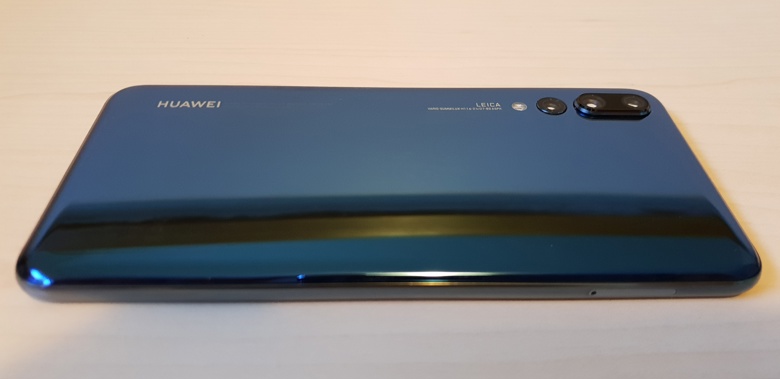
As one of the first phone-makers to give us a dual-lens camera, it makes sense Huawei would be happy to whack a third lens on there.
The question is; does more mean more?...
Let's start with the camera, because it isn't just one point of difference, it's actually a whole suite of differences.
The P20 Pro from Huawei features the most ambitious Leica rear-facing lens configuration to date, with a 20MP monochrome lens for contrast and detail, an unheard-of 40MP RGB lens to capture everything else and an 8MP telephoto lens which means the clearest, most powerful zoom I've ever seen on a phone camera.
Once again, thanks to the same Kirin 970 processor found in last year's Mate 10 series, Huawei has created an AI-driven device that combines images from each of those three rear-facing lenses to create picture quality most people wouldn't have thought possible just a year or two ago. Traditional challenges for camera-phones like low light, distance and movement have been swept aside in Huawei's new AI ecosystem and best of all, you don't even have to think about it, the P20 Pro does the thinking for you. There are now 19 different scenarios the camera recognises automatically, from food shots to waterfalls. If you're shooting a portrait, not only will the camera instantly sense this, it will re-frame the subject (or subjects) itself to make sure everyone's in the middle - even if you're a bit off balance when you take the shot.
Oh, this phone is smart alright.
As I've already mentioned, the zoom on the P20 Pro is ground-breaking - 5X before any noticable digital noise. I could easily do a whole review just on the camera alone and I haven't even mentioned the selfie-cam yet. This is a healthy 24MP and while it is only a single lens, it still takes very nice bokeh shots and the reasonably wide f/2.0 aperture means excellent results, even in dark conditions. (If things are really dark, the camera white-outs the screen to create an effective flash)
Huawei has a few new video tricks up its sleeve too, including AI Image Stabilisation and 960fps Super Slow Motion.
Given the new corner-centric position of the rear-facing tri-lens camera, you could be forgiven for thinking this phone is only about the photos. The Huawei and Leica branding on the back is printed to be read in landscape and when you hold the phone that way, it looks just like a digital camera.
But the P20 Pro is so much more than a camera.
The body is constructed from several layers of curved, toughened glass, creating a premium, luxurious finish. Unfortunately, Huawei is only releasing the black and midnight blue variants in the New Zealand market. Internationally there are pink/gold and twilight options that actually appear to transform from one colour to another. In saying that the blue is pretty enough.
While all that glass is beautiful to look at, and to hold, this is perhaps the most fingerprint-prone phone I've ever handled, so you might want to keep a cleaning cloth handy. It's also damned slippery. Don't tell Huawei, but I've dropped this thing several times already - luckily not over concrete and not from any great height... yet. I must get a case for it. (There's one included in the box of course)
Also in the box, a set of USB-C earphones and a USB-C headphone adapter - that's right; no more headphone jack here. I know this upsets some people but as a bluetooth earbud wearer, it doesn't bother me at all.
Other than the sheer beast-like power of the processor I've already alluded to, battery life is another department where the P20 Pro absolutely smashes it. Although the handset is slim and light, there's a 4000mHa battery in there somewhere. It may charge super fast, but it will easily last you all day, if not two.
The 6.1 inch OLED display is a little weird because of the notch. If you don't know what the notch is yet, you will, as more and more manufacturers decide to extend their screens up and around the front-facing camera. This really only affects where the notification icons show and if you decide you don't like it, you can hide it using the display settings.
Other than the selfie-cam, you'll find a tiny speaker in that notch too. This is combined with the more conventionally-placed bottom speaker to create a stereo effect when the P20 Pro is held sideways. At maximum volume, this setup is certainly loud enough to stop a conversation and the sound quality is actually comparable to some of the small bluetooth speakers I've tried.
The facial unlock on this thing is a revelation. You can set the lock screen to appear as soon as you pick up the phone. Not only is the face-scanner crazy fast, but it even works in dark conditions. That's right, not just dim, dark. Amazingly, just the illumination from the P20 Pro's own screen provides enough light for it to recognise your face.
When I was at the P20 launch recently, I complained to the Huawei team about how face-unlocking is all well and good until your phone is in landscape position as it is in my car's phone cradle. They agreed it would be good for it to work in both profiles. What I (and apparently they) didn't realise is on the P20 Pro, it does. Now if we could just get the home screen and lock screen to rotate to landscape too, we'd really be getting somewhere.
At $1299 the P20 Pro is certainly up there in the premium handset dollar range, but given its highest of high-end specifications, that price is still hundreds less than most of its big brand competitors. Given the fact it out-performs these other phones in vital areas like battery-life and photography features, you can rest assured your money would be well spent.
Take your Radio, Podcasts and Music with you










